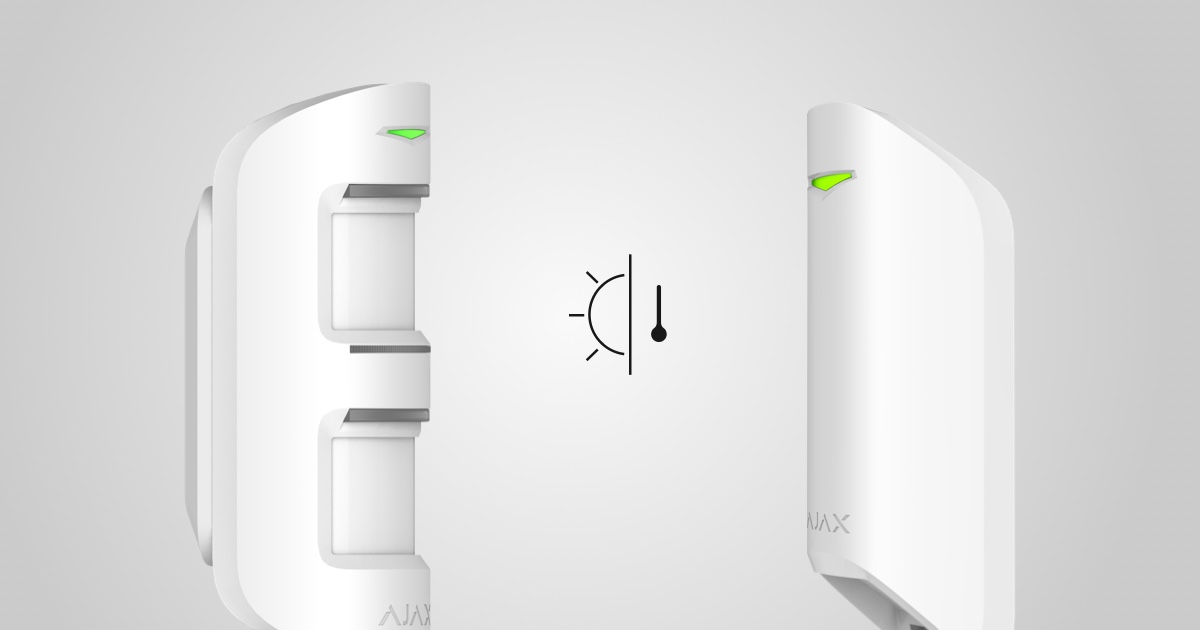Датчики движения отслеживают движения излучающих тепло объектов. Они настроены таким образом, чтобы реагировать на людей с первых шагов в охраняемой зоне и фильтровать ложные сигналы — от естественных помех и животных. Для повышения точности и эффективности работы для каждого датчика движения Ajax разработан специальный программный алгоритм обработки сигнала ИК-сенсоров.
В идеальных условиях температура человеческого тела (в среднем, 36,6°С) и температура окружающей среды отличаются, и их контраст позволяет датчику движения точно фиксировать перемещение человека в пространстве. В ситуациях, когда температура среды очень близка к температуре тела, необходима температурная компенсация.
Температурная компенсация реализуется на программном уровне и опирается на регулярные замеры датчиком температуры среды. При температуре среды от 14°С до 42°С с каждым замером датчик вводит поправку согласно хранящейся в его памяти таблицы поправочных коэффициентов — повышает, либо понижает чувствительность ИК-сенсоров.
Изменение чувствительности сенсора — внутренняя настройка, не конфликтующая с установленной пользователем в приложении чувствительностью датчика.
Благодаря технологии температурной компенсации датчик движения остается эффективным во всем допустимом для устройства температурном диапазоне.
Технология температурной компенсации поддерживается всеми датчиками движения Ajax.
